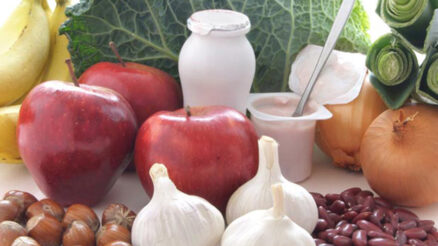At its core, biofeedback is a technique that enables individuals to learn how to control physiological processes that are normally automatic. Biofeedback provides real-time data on your body’s functions, such as heart rate, muscle tension, and brainwave patterns, empowering you with the knowledge to influence your own physiological state.
The benefits of biofeedback extend far beyond simple relaxation; it is a powerful tool for healing both the mind and body. By harnessing the power of biofeedback, individuals can alleviate stress, reduce pain, and improve overall health outcomes. This journey into biofeedback empowers you to take control of your health through self-regulation techniques, unveiling a path to enhanced well-being and a balanced life.
What is Biofeedback?
At the heart of biofeedback is the science of the mind-body connection. It operates on the principle that you have the power to influence your own physiological processes. Through sensors attached to your body, biofeedback machines collect information about your physical state, such as heart rate variability (HRV), electrodermal activity (EDA), muscle tension (EMG), and brainwave patterns (EEG). This information is then fed back to you in real time, allowing you to become aware of your body’s signals and learn how to alter them consciously.
Each type of biofeedback addresses different aspects of your physiological state. For example, HRV biofeedback focuses on the intervals between heartbeats, while EDA measures the electrical activity of the skin, and EMG assesses muscle activity. This diversity in biofeedback types ensures a comprehensive approach to understanding and influencing the body’s complex systems.
The role of biofeedback in interpreting the body’s signals cannot be overstated. It acts as a bridge between the conscious and unconscious mind, offering a unique insight into the inner workings of your body. By understanding these signals, you can learn to control responses to stress, pain, and other conditions, leading to profound changes in your health and well-being.
The Connection Between Biofeedback, Relaxation, and Healing
By providing real-time feedback on your physiological state, it teaches you how to intentionally enter a state of deep relaxation. This ability is crucial, as the physiological basis for relaxation is directly linked to improved health outcomes. When you relax, your body shifts from the fight-or-flight response to the rest-and-digest state, reducing stress hormones, lowering blood pressure, and promoting healing.
The healing potential of biofeedback spans both physical and mental health conditions. From chronic pain and hypertension to anxiety and post-traumatic stress disorder, biofeedback offers a pathway to recovery that is grounded in self-awareness and self-regulation. By learning to control physiological processes, you can address the root causes of these conditions, fostering a holistic approach to health that integrates mind, body, and spirit.
This exploration of biofeedback, from its scientific underpinnings to its application in relaxation and healing, highlights the technique’s power to transform lives. As we delve deeper into the ways biofeedback can enhance health and well-being, remember that the journey is one of empowerment, offering you the tools to become the architect of your own health destiny.
Biofeedback Techniques and Technologies
At its core, biofeedback techniques, such as breathing exercises, progressive muscle relaxation, guided imagery, and mindfulness, offer a pathway to greater self-awareness and control over one’s physiological state. These techniques, grounded in the principles of mindfulness and relaxation, enable individuals to fine-tune their responses to stress, enhancing their ability to achieve a state of calm and balance.
The technological landscape of biofeedback has expanded, incorporating wearable devices, software, and professional equipment designed to monitor and provide feedback on various bodily functions. This fusion of technology and therapeutic practice allows for a personalized and accessible approach to wellness, catering to the needs of a digitally connected society.
When considering DIY biofeedback versus professional sessions, it’s important to weigh personal goals, the complexity of the biofeedback equipment, and the specific health conditions being addressed. Professional guidance can offer a tailored and insightful journey into biofeedback, ensuring that individuals receive the full spectrum of benefits from their sessions.
How to Use Biofeedback
Biofeedback’s versatility shines in its application across a range of conditions and performance goals. From treating chronic pain, anxiety, hypertension, and headache to enhancing performance in sports, meditation, and personal development, biofeedback empowers individuals to take an active role in their health and well-being. Real-life case studies and success stories underscore the profound impact biofeedback can have, offering inspiration and evidence of its potential to transform lives.
How to Get Started with Biofeedback
Venturing into the world of biofeedback is a step toward mastering the art of self-regulation and enhancing one’s well-being. This journey, while deeply personal, often begins with the guidance of a professional in biofeedback therapy.
Finding a Biofeedback Therapist
Choosing the right biofeedback therapist is pivotal. Look for a professional who is not only certified by reputable organizations, such as the Biofeedback Certification International Alliance (BCIA), but also someone who resonates with your personal health goals and possesses a compassionate understanding of your needs.
The ideal therapist should have a robust background in treating conditions similar to yours and be open to discussing their approach and success stories. Qualifications to seek include specialized training in biofeedback techniques, a strong foundation in physiological psychology or related fields, and a commitment to ongoing education in their practice.
Preparing for Your First Biofeedback Session
It is essential to approach your first session with an open mind and a readiness to engage. Preparation involves understanding that biofeedback is a process of learning and growth rather than a one-time fix.
You may be asked to keep a diary of your physiological responses in different situations or to note any specific symptoms or triggers. Wear comfortable clothing to your session, as this will help you relax and engage more effectively with the process. Additionally, come prepared with questions or concerns you have about biofeedback; this will help your therapist tailor the experience to your needs.
Conclusion
Biofeedback stands as a testament to the power of mind-body connection, offering a pathway to relaxation, healing, and enhanced performance. This journey of self-discovery and empowerment encourages individuals to explore biofeedback as a tool for self-regulation and improved health.
As we move forward, the role of biofeedback in modern health care continues to evolve, promising a future where individuals are equipped with the knowledge and skills to nurture their well-being, embodying the essence of holistic health care in the digital age.





